
francais deutsch espanol www.Jasimuddin.org
|
SOS ARSENIC POISONING IN
BANGLADESH / INDIA.
THE WORLD’S POOREST POPULATION IN BANGLADESH, ARE SUFFERING FROM ARSENIC
POISONING, SOCIAL AND ENVIRONMENT DEGRADATION
|
 all my pain (MP3, 4.7 MByte) from Rabinranath Tagore
all my pain (MP3, 4.7 MByte) from Rabinranath Tagore
|
|||
|
Contents:   |
||||
| •
INTRODUCTION
HISTORY OF BENGAL |
|||||
| • Rural Women's culture & Traditional Heritage | |||||
| • Traditional Social Dynamics in Bangladesh | |||||
• Natural Indigo and the unfinish Fight for
Freedom

|
|||||
| • Bengali Cooking | |||||
| • Tragedy in Himalayas -Ganges
Plain:
Flood, Drought, Quake and Cyclone |
|||||
| • A near-famine situation the northern
districts
|
|||||
| • INDIA-BANGLADESH:
21st Century Battle for WATER SHARING - New |
|||||
| • Dams/Barrages Relation to
Recent Arsenic Poisoning |
|||||
•GROUND WATER
 |
|||||
| • Arsenic contamination | |||||
|
• "Water for the Poorest"
|
|||||
| •TOXIC EFFECT OF ARSENIC | |||||
| • Arsenic in Food Chain | |||||
| • Arsenic Carcinogen | |||||
| • The poor suffers | |||||
| • Time for Action
|
|||||
| • ARSENIC A NATURAL ORIGIN? | |||||
| • Source of Arsenic Poisoning- Anthropogenic- NEW | |||||
| • Rice - IRRI High Yield Producing
Countries
in River Plain faceing Arsenic Contamination. |
|||||
• ARSENIC REMOVAL
PROGRAM 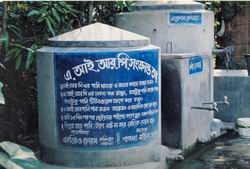 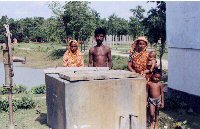 |
|||||
| • 50 million people are affected in Bangladesh - Latest and more |
|||||
| • ARSENIC MITIGATION PROGRAM | |||||
| • MITIGATION PROGRAM UPDATE- - NEW Edition | |||||
| • Mitigation Program 2003 | |||||
• DEVELOPMENT PROGRAM
 |
|||||
| • The World Bank for Withdraw of Rickshaw | |||||
| • 'WB linked with fundamentalism’ August 21, 2005 | |||||
| • Swedish (SIDA) and US Aid | |||||
| • Green Revolution | |||||
| • Destruction of Sustainable
Ecosystem
for the finest kitchen of the Industrial Countries |
|||||
| • Natural forest: Threats from
the
World Bank, ADB, and IMF |
|||||
| • Export of Hazardous Waste | |||||
| • Deadly Cargo - Nov. 2002 | |||||
| • Failure of Danish Aid | |||||
| • An Incorrect Arsenic Map of Bangladesh | |||||
| • KumarRiver - The River of sorrow | |||||
• Small is beautiful?
  |
|||||
• ENVIRONMENT/ POLLUTION
 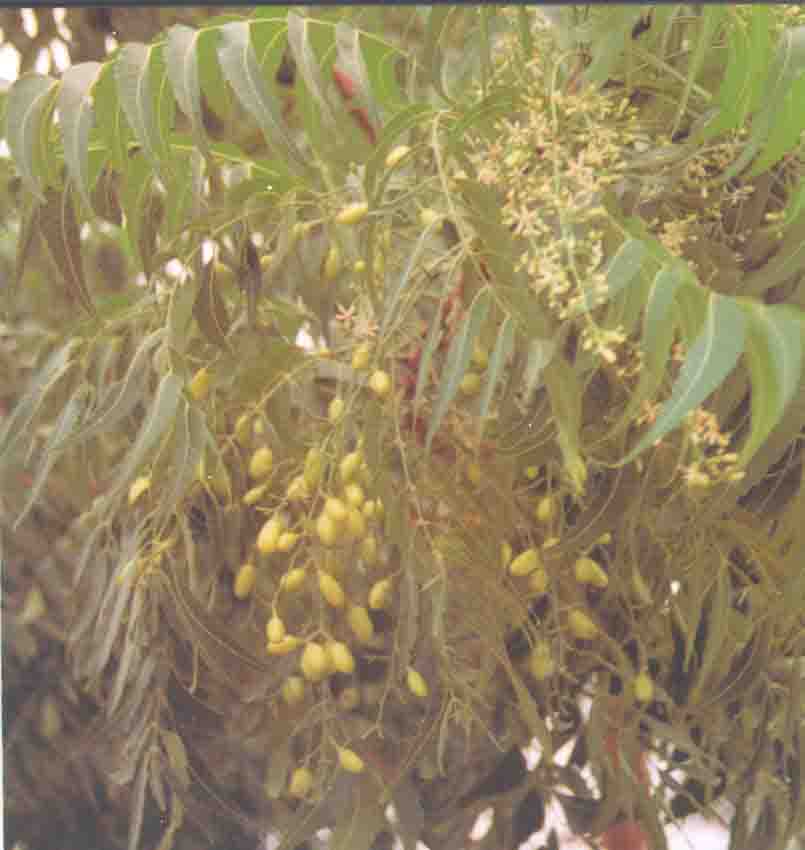 |
|||||
| • HOME GARDEN | |||||
| • NEWS AND ARTICLES | |||||
| • BOOKS - WATER- Jasimuddin | |||||
| • CRITICAL REPORT | |||||
| Project Reports:
|
|||||
| • AN EASY ALTERNATIVE FOR RURAL
POOR
- IN FARIDPUR and COMPANIGANJ, Kabirhat NOAKHALI DISTRICTS, 2004-2010* NEW  |
|||||
| • WOMEN PROJECT | |||||
| • PROJECT REPORT August 2003 | |||||
| • OUR PROJECT REPORT June 2002 | |||||
| • FINAL PROJECT REPORT (Educational) - 2002 | |||||
| • LATEST REPORT - | |||||
| • HOW CAN I HELP THE PROJECT | |||||
| • LINKS |
|||||
| • CONTACT Travel Oppertunities to Project Cooperation |
|||||
| info [a-t] sos-arsenic.net | |||||
|
CARDMA (Coastal Area Resource Development and Management Association), Member Organisation of IUCN, World Union of Conservation Tagore Einstein Council,
"Our world faces a crisis as yet unpreceived by
|
|||||
| Pat and Patua important audio-visual
mediums in educating the masses since immortal
Since July 2003 we have started
But the Government or NGOs does not have
Green Revolution: Destruction of Biodiversity
and Environment
Safe water is becoming scarce day by day due arsenic contamination and salinity in southern districts (March 24, 2005). 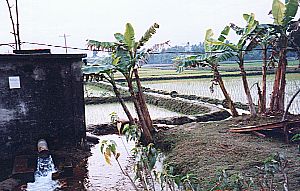
Irrigation with arsenic contaminated
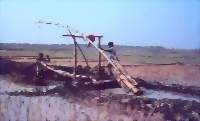
surface water (arsenic free) irrigation?
Our films, books, lectures and endless symposia are useful to a
degree, but ultimately they miss the boat. They come from the city, and rarely filter
down to the villages in crisis.
|
|||||
The power elites and politics
The world has now over 6 billion people. Of them, about 3 billion live in poverty and more than one billion of them live in extreme poverty. The majority poor people live in four regions including: South Asia, Africa, Eastern Europe and Central Asia, Latin America and the Caribbean. South Asia and Sub-Saharan Africa are the homes of millions of poor and most of them are extreme poor.
As much as 24 percent of global diseases is caused by environmental exposures, much of which can be averted by well-targeted interventions, the World Health Organization (WHO) said in a report made public recently. The report also estimates that more than 33 percent of diseases in children under the age of 5 is caused by the environmental exposures. And preventing the environmental risks could save as many as four million lives a year in children alone, mostly in the developing countries like Bangladesh. The report titled "Preventing disease through healthy environments -- towards an estimate of the environmental burden of disease" assesses that more than 13 million deaths occur annually due to absence of preventable environmental causes. Of the global figure (13 million), nearly one-thirds of death and disease in the least developed regions occur due to environmental causes.
The tropical and subtropical regions are rich in natural and bio-resources. It implies that poor and marginal group of people in the planet have developed an interdependency relation with nature, where nature and ecosystems give the poor subsistence with food, fiber, water, medicine and fodder. The nature generates various livelihood support services for people for long time while the poor protects and conserve the nature. However, it is also blamed that poor also degrade nature, but they harm the nature for their mere subsistence only. But most cases the commercial interests of the rich backed by the power elites and politics enhance this process of over exploitation (The projects by the World Bank and developing partners benefit only the elites).
The poor donot have adequate access to the available sources of drinking water and they have to suffer the most from lack of safe drinking water resulting in various water related diseases and ill-health.
The urbanisation process is not successful and will pose ecological challenge. The cities are littered with slums, living conditions are terrible and pollution is so high that they pose open risks. The rich for skewing the ideals of globalisation, which he sees as a force but not sufficient enough to fight poverty. blames the rich for skewing the ideals of globalisation, which he sees as a force but not sufficient enough to fight poverty.
Once the rich gave 0.8 per cent of their GNP in assistance which totalled $175 billion. Now, they give only $15 billion and with the gap, we could get schools, immunisation, AIDS prevention and water and sanitation for all the poor of the world. Globalisation is not a sufficient force when the poor countries face disease and poverty with no money. The rich also fall far short of giving access to trade to the poor. Now, the rich can blame the poor for corruption and mismanagement, and the poor can also blame the rich.
The rich nations take the whole year for preparation, but the poor countries do not do their homework and lack a coherent voice. If countries like Brazil, Bangladesh, India which have over a billion in population raise their voice in unison, the rich will have to listen to them. We need a social change in our own country and also in the North.Climate and arsenic free water
THE gathering of 4,000 residents of the district of Gaibandha — most of them farmers — on Tuesday, demanding compensation for damages caused by man-made climate change is significant as the issue now makes the transition from an academic cause to a political one. For a country that will bear the brunt of some of the worst fallouts of global warming and climate change, this issue has had a remarkably low currency among the ordinary citizenry, who are the most vulnerable. According to one estimate, Bangladesh stands to lose up to 17 per cent of its landmass by 2050 because of a one metre rise in the sea level. But even as such dramatic postulations are debated, large swathes of the country is now experiencing variations in rainfall, a higher intensity of floods and cyclones, as well as droughts, confounding the agricultural calendar and imperilling food security.
With a key United Nations conference on climate change approaching in the first week of December, the farmers’ protests organised under the banner of the Campaign for Sustainable Rural Livelihoods are not only timely, but also the only relevant way of ensuring that the demands of the world’s poorest and most vulnerable communities are the focus of efforts to slow down the pace of carbon emissions.
THE problem of arsenic in drinking water is snowballing with fateful consequences. Although the arsenic contamination in drinking water is near to being universalised, there is very little government effort visible to grapple with it. More and more areas are being reported as arsenic-affected. Vast areas in all the districts of the country except the greater CHT are affected. Last year a government source disclosed that 30 million people are exposed to arsenicosis and 50,000 are already afflicted. Numerous deaths have been reported from Pabna, one of the worst-hit districts. The situation in Chittagong is equally disturbing. According to an agency report carried in yesterday’s New Age, in Chittagong the level of arsenic in the water of some tube-wells is alarmingly high – 0.4 microgram per litre as against the permissible limit of 0.05. The study was conducted by the Chittagong University of Engineering and Technology and the Institution of Engineers in 13 of the city’s 41 wards and found high contamination level in seven of those wards while in the remaining six wards too the level was higher than the prescribed WHO standard. Arsenic is also reportedly entering the food chain.
Though the problem surfaced around 15 years ago, very little was done to make drinking water arsenic-free or to provide alternative sources of drinking water to the people. Arsenic poisoning acts slowly and full dimension of the peril will begin to unfold with time. What is particularly regrettable is that the successive governments should apparently adopt a policy of wait and see instead of coming out with a bold mitigating programme. Even the 22-member expert committee formed in 2004 to look into the problem is not holding its meetings regularly. The government and the NGOs did identify and red-mark some strongly contaminated tube-wells, and stopped there. No arrangement was made to provide alternative source of water. And the ‘safe’ tube-wells may not be safe for ever and periodic testing is necessary. The people themselves have no access to any testing facility. Tube-wells could be sunk deeper to obtain arsenic-free water. This is expensive and can be done at community-level. It is true there is no quick-fix solution to arsenic but there is a variety of mitigating techniques which can be implemented according to local conditions.
Some home-made filtration systems have been devised which are low-cost. But due to absence of official drive few affected households are presumably using these devices. Critics feel that the government is allowing the problem to drift in order to create a justification for corporatisation of drinking water. This will not only penalise the poor in yet another way but also increase the country’s dependency in another vita sector.(Editorial, Daily Newage, November 8, 2008)Mitigation
Arsenic-free country still a far cry
Though many initiatives are underway to address arsenic problems but most of the people in rural Bangladesh are yet to be freed from the risk of arsenic poisoning since they are still bound to drink arsenic contaminated water.
Thousands of people in different districts in the country have been passing their days with great threat of arsenic, a major environment problem. Contamination by arsenic of the ground water in parts of the country and its fall out has proved to be a deadly health hazard threatening the lives of millions of people.
The scenario of arsenic contamination in Pabna district is worst than that of other affected parts of the country. All most all the upazila in the district are within the grip of arsenicosis problem. Eight out of nine unions of Bera upazila of the district still under the risks of a major arsenic health hazards. Nearly one lakh fifty thousand people out of two lakh and 17 people in the upazila are still taking arsenic contaminated drinking water (The New Nation, February 18, 2009).Daily Ittefaque on NGOs depriving the poor in the name of Arsenic mitigation -March 8, 2009 (in Begali)
Arsenic accumulation from rice and meat -in Bengali, Daily Ittefaque, May 16, 2009
(Left) World Vision failed to supply arsenic free water at Vashan Char or everywhere in faridpur District,but we set (2006) arsenic free well.
Deep tube well at Tambulkhana, Faridpur As 120µg/l and saline (rejected water), we put an arsenic free well a fraction of the cost of the LGRD MinistryMore than 90 percent of the people of Bangladesh are drinking groundwater but this water was always called the “Devil’s Water” by villagers and when tubewells were sunk in many districts, villagers left their villages crying out “the Devil’s Water” is coming, the “Devil’s Water” is coming. But this was quickly brushed aside as superstition. But today people ask - was it just superstition – because hundreds of thousands of people are now suffering from arsenicosis.
Today with an estimated 12-million tubewells in Bangladesh alone, many of which have levels of arsenic in the water above the World Health Organisation’s Safe Guideline recommendations, many people, even today, are drinking poisoned water, often because of ignorance, or apathy but also because they have no alternative. But with no known cure and the best treatment on offer – to drink arsenic-free water and eat a good nutritional diet – this for millions of villagers are still out of reach. We subsequently had to spend millions of dollars for testing tubewells for arsenic – which was a waste of money and time because these kits proved to be useless. Even the World Health Organisation and UNICEF no longer use them.
But the worst seems to be in the Ganga Plain where the population of about 500-million risk their lives by drinking contaminated water. Although that does not mean that all will suffer, or all will continue to drink the water, but they are at risk. The problem is that even after more than fifteen years we are still in the dark and do not know just how big the problem really is. Meanwhile people fall sick and die.
Women are the worst victims of ostracism. Women in Bangladesh have o take the main responsibilities to perform domestic roles. They are doubly vulnerable both because of the disease itself and by being treated as outcasts. Due to the socio cultural position of women in society, unmarried women and women abandoned by their husbands and families live inhumanly. In our patriarchal society, women are the worst sufferers of arsenicosis. It is evident from a study that women suffering from arsenicosis are subject to domestic violence such as dowry (41.7%), divorce (16.7%), separation (16.7%), desertion (8.3%), physical torture (8.3%) and ploy (8.3%).
Source: The Bangladesh Observer, June 11, 2006Countless editorials and reports have been published on arsenic contamination but we all know that as far as concrete results are concerned, our achievements have not been overwhelming. In fact, a recent report bares all the facts before us and we know that in the last three years 36 persons have died, 38,500 are affected and about 7 crore people face a direct threat. So far, around 50 lakh tube-wells have been checked and of them, 14 lakh, a staggering number, have been identified to contain arsenic. Already, arsenic contamination has taken a deadly form in 9 thousand villages with 80 to 100 per cent contamination and if the present move aimed at mitigation is not geared up then arsenic will continue to kill and deform(New Age, 19. 05. 06). Mon, 8 May 2006, LGRD and Cooperatives Minister Abdul Mannan Bhuiyan on Monday said care and conservation of water is a matter of national security and that access to safe drinking water is essential for survival. The LGRD Minister said the government has formulated National Water Management Plan to ensure proper use of water.
ARSENIC risk has fast spread over the country in last few years. The current risk has spread over 80 million people. LGRD Minister Abdul Mannan Bhuiya last Sunday informed the national parliament about the matter (Mon, 14 Jun 2004). In the mid-90s it was 50 million and now even before the passage of a decade it has affected 60 per cent people of the whole country. The minister, however, did not say in how many years the number has risen to 80 million from 50. He is, of course, optimistic about the situation when he says," the risk was not alarming". The government is responsive to the situation, no doubt. It has approved a plan regarding arsenic contamination called, "Bangladesh Arsenic Policy 2004". It has approved another plan called, "Arsenic Mitigation Plan." Though the minister has not mentioned any point or points of the arsenic policy and the plan but he briefly mentioned about the steps taken by the government. The steps of the government include training up doctors and supply of safe drinking water to the people of the affected areas.
He said that as many as 14 ongoing projects were under implementation in the arsenic affected areas across the country to address the threats. These projects include the GoB-4 Project under the Public Health Engineering Directorate, the GoB-UNICEF Project, Bangladesh Arsenic Mitigation Water Supply Project and DANIDA Water Supply Project. The Minister said, the government had approved the "Bangladesh Arsenic Policy 2004" and the " (Arsenic) Mitigation Plan". These measures will help solve the problem easily in a coordinated manner. Safe drinking waters is being supplied to people of the affected areas in the country on the basis of these policies, he added. LGRD and Cooperatives Minister Abdul Mannan Bhuiyan on Monday said care and conservation of water is a matter of national security and that access to safe drinking water is essential for survival.
Repeated appeals by local people for safe drinking water have fallen on deaf ears. The administration claims arsenic contamination has been reduced to a large extent but this is evidently wrong.
We invited LGRD Minister to visit arsenic prone areas of Faridpur (March 2006). First, he promised to visit the area but he has more important works to do! He refused to visit project area .
MORE WORDS, LESS WORK ON ARSENIC MITIGATION
At present it seems that the Donors especially WB are very anxious about the poverty of Bangladesh. Now a days Donors no longer give grants or untied aids. Most of the loans coming from WB is either for a particular project or based on one or another certain strategic policy framework such as SAP (Structural Adjustment Programme). SAP has miserably failed not only in Bangladesh but also in many countries of Asia and Africa.
Arsenic Mitigation Program of the government is mainly financed by the World Bank.LOCAL Government, Rural Development (LGRD) and Co-operatives Minister Abdul Mannan Bhuiyan was commendably candid about words surpassing deeds in terms of mitigating the arsenic challenge. He recognised failures "in providing proper treatment to victims of arsenic contamination" and concluded that there had been "more words on the arsenic problem than action". Such a portrayal of real picture, one hopes, will be followed up by sustained activism in the arsenic mitigation area. We don't want to see such an assessment go in vain or give rise to further talking into the ether.This view was reported on (The Daily Star,) October 16, 2002. But still it is MORE WORDS, LESS WORK ON ARSENIC MITIGATION (2006).
Dr Saadat Hussain (advisor to Advocacy and Human Rights Unit of Brac) identified nepotism at the local governance level and leakage at the service delivery system as major setbacks in developing the status of the ultra-poor. There are some people having close connections with the local government representatives who eat up the relief or other assistance allocated for the ultra-poor under different government programme, he added. "This is how the ultra-poor have been deprived of their access development," he said ((Daily Star, July 13, 2006).
The country had to incur a total financial loss of Tk 526.27 crore due to corruption in various constituents of the public and private sectors in 2005, according to a report on corruption released on Wednesday (5. 07. 06) by Transparency International Bangladesh. Abuse of absolute power helps expansion of corruption in the society,’ said TIB, terming it the main factor behind corrupt practices. According to the report, LGRD and cooperatives ministry is at the top of the list of corruption with incurring over Tk 208 crore losses in 2005. TIB identified the local government, rural development, power division and the forest department as the most corrupt public offices in terms of monetary losses (New Age, July 6, 2006).
What may we know of the secret sorrow of the poor?
The poor in the developing world pay on average 12 times more for water than people connected to municipal systems, according to an ongoing study by the World Commission on Water for the 21st Century. While the rich benefit from subsidized treated piped water, water vendors charge the poor up to 100 times more for water of doubtful quality in some cities such as Port-au-Prince, Haiti and Nouakchot, Mauritania. We know from econometric analysis, that the poorest suffer the most from arsenicosis in Bangladesh (WHO, 2000). Most arsenic patient of Bangladesh is still drinking arsenic contaminated water and can hardly afford any medical treatment or piped water.
The poorest can barely afford to offer money or time for a village committee or maintenance of installations. Therefore, local communities allow each of the families that are making use of the water resource to contribute an amount they can afford. Sometimes, contribution from 30 families for a deep tubewell of Tk. 5000 varies between Tk. 0 and Tk. 800 or piped water. Relatively well-off people who can afford to contribute a large amount of money or to become a member of a village committee, are able to derive more privileges from their increased status.
Despite the quite impressive network of DPHE thana, district and division offices, these departments are hopelessly subject to inefficiency, bureaucracy, corruption, lack of capacity, lack of capabilities, lack of professionals etc.The WB functions best in countries like ours because we have no performance audits, no accountability, extreme crony corruption and, to be honest, inadequate mental faculties to challenge them. Those who have chase them for assignments. And so everyone has a stake in the World Bank.. What became obvious was the extreme contempt in which the official technocrats and bureaucrats held ordinary people. The entire idea of development in Bangladesh is based on the GO-NGO co-operation model and the people have little role to play in this. NGOs are generically fund seekers and now provider of employment. Most of them have almost no reality beyond this. And this generally grovelling bunch conveniently represents the public face in the eyes of the donors who ultimately decide policies. Not because they want to but because they have to. The ability of the national counterparts is so low that they would not be able to formulate a policy without donor support. They are unable to disagree either because that might mean fund cuts. So it all ends up in the same basket (Afsan Chowdhury, Daily Star, famous columnist).
it is a disaster for the people but it is also an indictment on water and health authorities because doctors in contaminated areas are finding it increasingly hard to treat an increasing number of people suffering from arsenic-poisoning. The fact that we now have a second generation of people growing up with the signs of arsenic poisoning should spur us to action but this is apparently not the case. Even newborn babies have not escaped this scourge and many are being born with the poison inside their bodies.
Although a number of arsenic remediation techniques are currently available, ranging from conventional coagulation to modern principles, sufficiently cost-effective remediation methods are still not generally available for implementation in developing countries like Bangladesh. With several thousand cases of melanosis already on record, it is important to note that as of July 2005, only 30% of the villages have been surveyed. Therefore more information from a greater number of surveys may reveal a far larger number of people have been affected. According to another World Bank study, a clear picture of the epidemiology of arsenic in South Asia is yet to emerge despite a number of research studies and other interventions. This study also revealed that estimates of possible health impact of arsenic ingestion are mostly based on data collected from the United States and Taiwan therefore their validity for interpretation or application for Bangladesh is questionable.
The future of Bangladeshi villages has been jeopardised, but this diabolical situation did not happen overnight and is the effect of years of ignorance and neglect. Moreover household chemical solutions cannot hold the fort for much longer as one by one they are proven inefficient and subject to too many variables. When recommending remediation technologies for Bangladesh we must be able to distinguish between methods appropriate for the US and other advanced nations and ones intended for villages. Considering that arsenic is a serious threat to human life, we must be forgiven if we fail to comprehend why a comprehensive mitigation programme is still not in place (Sylvia Mortoza, The Bangladesh Observer, February 10, 2006).
Kuzurdia--an arsenic-free village
Project Report 2006-8
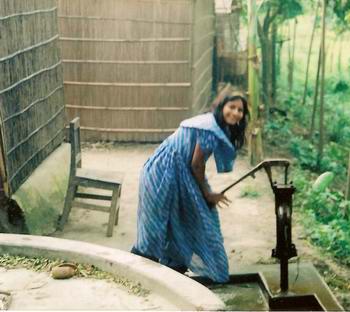
The current risk has spread over 80 million people. LGRD Minister Abdul Mannan Bhuiya last Sunday informed the national parliament about the matter. In the mid-90s it was 50 million and now even before the passage of a decade it has affected 60 per cent people of the whole country. So far, around 50 lakh tube-wells have been checked (some reports say most of the tests are wrong, A new study of wells in Bangladesh and West Bengal, India, suggests the arsenic test kits used by field workers are frequently inaccurate, producing scores of incorrectly labeled wells. The findings were published this month on the Web site of Environmental Science & Technology, a peer-reviewed journal of the American Chemical Society, the world's largest scientific society. The print version of the paper is scheduled for the Dec. 15 edition of the journal., 2002) and of them, 14 lakh, a staggering number, have been identified to contain arsenic. Already, arsenic contamination has taken a deadly form in 9 thousand villages with 80 to 100 per cent contamination and if the present move aimed at mitigation is not geared up then arsenic will continue to kill and deform (New Age, 19. 05. 06).
None of the project of the Government is addressing to mitigate arsenic contamination, whereas misuse of money, corruption, manipulation and increase in so called "experts" without the practicaland scientific knowledge of arsenic mitigation are responsible for the failure of the projects. We invited resposible LGRD Minister who first wanted to visit Faridpur and then rejected to see project area! We wanted to show that a fraction of the money is required to mitigate arsenic in most of the areas. However, the country incurred a financial loss of over Tk 526 crore in 423 incidents of corruption in the year 2005, reports BDNews. This was revealed in the 'corruption detabase 2005 report' of the Transparency International Bangladesh (TIB) published Wednesday through a press conference at the National Press Club. According to the report, LGRD and cooperatives ministry is at the top of the list of corruption with incurring over Tk 208 crore losses in 2005(Bangladesh Observer, July 6, 2006).
In all of World Vision Bangladesh’s Area Development Programmes (ADPs) education and prevention of arsenic poisoning are important goals. In some ADPs, such as Chitalmari, access to safe, clean water is such a vitally important issue that World Vision runs a separate, New Zealand Government funded, water project from 2000-2003. By the end of the project more than 32,000 people had access to safe water. But we see in Faridpur almost all its program has failed whether TSF (Tubewell Sand Filter) or Direct Dug Wells (see pictures). We have shown that with the knowledge of hydrogeology, arsenic free water can be obtained with a fraction of the money spend by NGOs or Government.
An intervention that is made with the best intentions to solve a problem but ends up worsening the situation or creating new problems. Past efforts to improve the drinking water supply of Bangladesh are a classic example.
Unique and differing stratigraphies found within the delta system
The distribution of arsenic in this region showed a high degree of spatial variability, this high degree of spatial variability also presented an opportunity for remediation. We have discovered that within contaminated aqufiers there is facies change (deltaic sedimentation) allows to discover arsenic free aquifers. Once we have made such discovery, many villagers intiated targeted arsenic free tubewells. Thus with afraction of the expenses we have made several arsenic free villages:
Also several villages in Noakhali distric and many more villages in Faridpur.1. Village Vashan Char 2. Village Ambikapur 3. Village Kaijuri 4. Village Tulagram 5. Village Muraridhoa 6. Village Purbo Muraridhoa 7. Village Purbo Banogram 8. Village Madha Para, Domkaron 9. Village Purbo Banogram, Dhakin Para 10. Village Tambulkhana 11. Village Betbaria 12. Aubergine Village- Betbaria 13. Village Kasnail Only arsenic-free water is not enough. We are proud for those who could made themselves self independent through our small effort:
Priority of Our Project in Faridpur and other areas to help the neglected and the poor
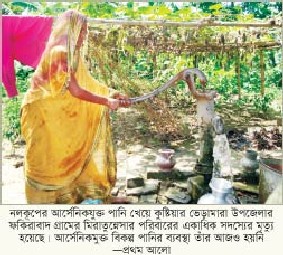
Village Fakirabad,Veramara-Kustia district 12.08.08: Several deaths from this water, but people driniking this water as there is any alternative. Miratunessa (15), and Jharna died 13 years ago - without knowing the symptoms arsenic poisoning. They have lost three sons, one daughter , husband , mother in law, sister in law etc. from drnking water from this tubewell. They do not have yet any safe water.
Where is SONOFILTER million dollar prize winner from Kustia district? The daily Prothom Alo writes (August 12, 2008): Money obtained from different sources about 40 million dollars (World Bank, UNICEF, US AID, CIDA (CANADA), JAICA (Japan), SIDA (Sweden), Australian Aid, UNDP etc) for arsenic mitigation has totally failed to addrees arsenic mitigation. And the money is vanished in the name of Arsenic Mitigation. Dr. Ainul Nishat (IUCN), a reknown water expert, says it is doubtful about the achievement of arsenic mitigation by the Government and NGOs.77m poisoned by arsenic in drinking water
BBC, 19 June 2010
>Up to 77 million people in Bangladesh have been exposed to toxic levels of arsenic from drinking water in recent decades, according to a Lancet study.
The research assessed nearly 12,000 people in a district of the capital Dhaka for over a period of 10 years. More than 20% of deaths among those assessed were caused by the naturally occurring poisonous element, it found.
The World Health Organization said the exposure was "the largest mass poisoning of a population in history". It began after hand-pumped wells were installed in the 1970s to tap groundwater.
Scientists say even small amounts of arsenic over a long period can cause cancer of the bladder, kidney, lung or skin. Bangladesh was chosen for the study because nearly 90% of the population uses groundwater as its primary source of fresh water.Millions in Bangladesh exposed to arsenic in drinking water BANGLADESH
June 20, 2010|By Brian Walker, CNN
could be the worst mass poisoning in history. And the terrible irony is that it may all be due to an idealistic push to clean up drinking water for some of the world's poorest people.
A new study published in British medical journal The Lancet says that up to 77 million people in Bangladesh are being exposed to toxic levels of arsenic, potentially taking years or decades off their lives.
An international team of researchers from Chicago, New York and Bangladesh followed 12,000 people over the past decade, monitoring their arsenic intake and mortality rates from contaminated wells.Use of arsenic-contaminated water jeopardising lives of millions
The arsenic problem in Bangladesh has not been taken as a serious threat to public health. A decade ago the government, donor organisations, NGO's and research institutions declared that people of Bangladesh were vulnerable to arsenic contamination of water. Numerous projects designed to solve the problem have been taken up by different organisations with large amount of foreign fund flowing in. But the irony is after so many years of such initiatives the organizations - foreign and local - have failed to ensure safe drinking water for the people of Bangladesh. *Mortuza Ali Chowdhury Milan . June 28.2010
Researchers writing in The Lancet study calculated that in the past thirty years, roughly 77 million people in Bangladesh, around half of the country’s population, were accidentally exposed to arsenic contaminated water.
Using a century’s worth of data collected by the Health Effects of Arsenic Longitudinal Study (HEALS), scientists tracked arsenic poisoning in correlation with mortality rates. The massive study involved testing 11,746 participants every two years, in addition to testing 5,966 wells for contamination.
All participants with arsenic contamination, regardless of the concentration, had an increased risk of mortality -- meaning that people exposed to the Bangladesh safety standard levels (50 micrograms/liter) and even the WHO recommended standard levels (10 micrograms/liter) were at increased risk of sickness.
The most disturbing results, however, showed that once individuals were exposed to high arsenic levels, their risk of mortality remained high even after they subsequently decreased or stopped their exposure.
So, it is high time for the Bangladesh government and non-government organisations to concentrate on this problem and take appropriate steps as soon as possible to do defend Bangladesh from arsenic's damage.
Mohammed Jamal Uddin,Dept. of English Language and Literature, International Islamic University,Chittagong.Chittagong under arsenic threat
CHITTAGONG, DEC 6,2010: Most of the Chittagong City Corporation (CCC) areas is under the threat of arsenic contamination as in almost all shallow tube wells’ water arsenic has found at a hazardous level. The report titled ‘Arsenic Scenario in CCC’ revealed that the port city’s 13 wards, out of 41, are already and definitely arsenic contaminated. Among them condition of 7 wards, such as: East Sholashahar, South Kattali, West Bakalia, East Bakalia, South Bakalia, North Agrabad and North Halishar are severely affected. About 30 per cent of shallow tube wells have been found contaminated causing a huge health risk for the city.
It is mention worthy that two-third CCC people, having no other alternative, depend on tube wells water both for drinking water and household using, as Chittagong WASA can fulfill the requirements of one-third of the city dwellers (The Independent,26. 12.10),Arsenic is a slow killer that accumulates in the body resulting in nails rotting, dark spots, bleeding sores, swelling, large warts and a form of gangrene. It is carcinogen increasing the risk of skin cancer and tumours of the bladder, kidney, liver and lungs.
As a result of widespread water contamination domestic abuse has become just one of the social costs. There are now many reports of broken marriage, as husbands send disfigured wives back to their parents. In arsenic polluted areas many young men and women don't get married at all. Some people think the poison can be passed on from parent to child so many arsenic poisoned women have problems finding husbands.NASA-Funded Research Discovers Life Built With Toxic Chemical
microorganism on Earth able to thrive and reproduce using the toxic chemical arsenic
The United States National Aeronautics and Space Administration [NASA] has finally released its highly-anticipated mysterious announcement that was said “to impact the search for evidence of extraterrestrial life.” Turns out that the agency has discovered a new life form right here on Earth. To be more specific, the new life form has been found in Mono Lake in California.
The new microorganisms appear to thrive and reproduce in toxic chemical arsenic. All known forms of life on Earth are made up of six basic elements — carbon, hydrogen, nitrogen, oxygen, phosphorus, and sulfur. However, the new microorganisms uses arsenic instead of phosphorus in its cell components — something which was initially believed to be impossible despite theories from various scientist.Researchers conducting tests in the harsh environment of Mono Lake in California have discovered the first known microorganism on Earth able to thrive and reproduce using the toxic chemical arsenic. The microorganism substitutes arsenic for phosphorus in its cell components.
Carbon, hydrogen, nitrogen, oxygen, phosphorus and sulfur are the six basic building blocks of all known forms of life on Earth. Phosphorus is part of the chemical backbone of DNA and RNA, the structures that carry genetic instructions for life, and is considered an essential element for all living cells.
Phosphorus is a central component of the energy-carrying molecule in all cells (adenosine triphosphate) and also the phospholipids that form all cell membranes. Arsenic, which is chemically similar to phosphorus, is poisonous for most life on Earth. Arsenic disrupts metabolic pathways because chemically it behaves similarly to phosphate. “The definition of life has just expanded,” said Ed Weiler, NASA’s associate administrator for the Science Mission Directorate at the agency’s Headquarters in Washington. “As we pursue our efforts to seek signs of life in the solar system, we have to think more broadly, more diversely and consider life as we do not know it.”The results of this study will inform ongoing research in many areas, including the study of Earth’s evolution, organic chemistry, biogeochemical cycles, disease mitigation and Earth system research. These findings also will open up new frontiers in microbiology and other areas of research.
The number of sick people will increase to a dangerous level as arsenicosis
people drinking water from a source containing a level of 10-50 microgrammes have a 34 percent higher risk of death and those with the highest level of exposure (between 150 and 864 microgrammes) had a 64 percent higher risk of mortality. Exposure at relatively lower levels also carried a risk. As groundwater is still the main source of drinking water for a large percentage of the population, what should be of equal concern to the government is the fact that one of the main problems resulting from consumption of arsenic on a daily basis is it reduces the productivity level of a person.
But if the polluted tube-wells are not sealed off or medicines provided, the number of sick people will increase to a dangerous level as arsenicosis is a major disease that becomes the silent terror as it creeps up on people to cause major problems and sufferings.
This is the scenario that has been allowed to develop as proper attention was never given by any government since the discovery of arsenic in tube-well water. That this gross indifference to such a critical problem was counterproductive never entered the thoughts of those in power. Those who have continued to drink the contaminated water, either out of ignorance or for lack of an alternative source, are victims of a gross lack of concern. But worse still, if seen from an economic point of view, is that arsenicosis has created a work force unfit to work (Editorial, The Independent,16 October 2010).
While problems of people living in the capital are well focused, people in the rural areas are hardly given any attention. The lack of safe water is one such problem that millions of people living outside the major cities are faces with even though, the country has very easy sources for natural water. Faulty policymaking, lack of awareness, lack of implementation of existing laws, a tendency of blindly following the prescription of donor agencies have led to the misuse and destruction of natural water. According to studies carried out by several government and non-government agencies, over dependence on the underground water level has resulted in the table declining at an alarming rate as well as polluting the underground water sources .
Seasoned geologist of the country M Abdullah, who was one of the active members of formulating the national policy says, "Going to deeper aquifer as the quick solution to the problem can never mitigate it. It will rather lead the crisis to a point where we have nothing to do. It's true that arsenic is frequent in the upper water table. As a quick solution the government agency is initiating plan to use deeper aquifer. Doing it arsenic can easily defuse to the deeper aquifer through leaching. Then the deeper aquifer will also be arsenic-contaminated. Moreover, because of so much dependence on the underground for irrigation, safe water and other reasons the water table is declining at an alarming rate"
(E. Komol, Daily Star)Some 100 million people in Bangladesh and West Bengal of India are exposed to risk from groundwater arsenic contamination, according to experts from home and abroad. Arsenic-contaminated water and food can cause various diseases including cancer, which may be a major problem in Bangladesh and India in future, they said. The health risks also include skin lesions, respiratory problems, cardiac disease, nervous system disorders, reproductive defects, diabetes mellitus, and cancers of organs like skin, lung, kidney, and bladder.
The observations came at an international conference on “arsenic health and water supply management: affordability and sustainability” at Dhaka Community Hospital (DCH) auditorium in the capital yesterday. Harvard School of Public Health, Harvard University, USA; Massachusetts Institute of Technology (MIT), USA; School of Environmental Studies (SOES), Jadavpur University, Kolkata; CRC Care, University of South Australia; and DCH organised it. "Many people in the Ganga-Meghna-Brhammaputra basins will die in the long run due to cancer," said Dr Dipankar Chakraborti, director (Research) at SOES of Jadavpur University. Chakraborti, who first discovered arsenic in India and did extensive research on the poisonous chemical, said he found many women in West Bengal, Bihar, and Uttar Pradesh suffering from lung cancer. According to a research, he cited, 6.4 tonnes of arsenic has been deposited in soil from 320 irrigation tube wells over an area of 200 square kilometers in India.
“Similar or even more acute would be the situation in Bangladesh.” The authorities, however, are still negligent to the issue, Chakraborti added. He also cited a 2009 survey as saying about 16,000 patients were registered with different type of arsenical skin lesions after screening of 1.55 lakh people from affected villages in India. The researcher said they find an increasing number of patients with arsenical skin damages. Arsenic is a serious problem in food chain, especially in rice and vegetables, he added.
Brac University Vice-chancellor Dr Ainun Nishat said, “I feel bad that this serious problem of arsenic is neglected. I don't know why.” Nishat, also a water expert, suggested highlighting the issue in the global forums for a clear understanding to the policymakers and donors. DCH Trust Chairman Prof Quazi Quamruzzaman said the main source of drinking water in Bangladesh is tube wells. As shallow tube wells are found lifting arsenic-contaminated groundwater, international agencies are suggesting for installing deep tube wells, he said.
On the other hand, very few are advocating for use of surface water saying the water contains bacteria and germs, he added. “We however are in favour of using surface water, as filtering bacteria of surface water is easier than filtering arsenic from water.” Prof David C Christiani, Elkan professor of Environment Genetics, and Zuena Aziz, joint secretary of the LGED ministry, jointly chaired the conference. DCH coordinator Prof Mahmuder Rahman, Prof David Bellinger of Harvard University, and Prof Ravi Naidu of University of South Australia also addressed it. (Daily Star, January 19, 2011).GROUNDWATER ARSENIC CONTAMINATION IN BANGLADESH: CAUSES, EFFECTS
The serious arsenic contamination of groundwater in Bangladesh has come out recently as the biggest natural calamity in the world. The people in 59 out of 64 districts comprising 126,134 km2 of Bangladesh are suffering due to the arsenic contamination in drinking water.
Seventy five million people are at risk and 24 million are potentially exposed to arsenic contamination. Most of the recognized stages of arsenic poisoning have been identified in Bangladesh and the risk of arsenic poisoning in the population is increasing everyday.
The severity of arsenic contamination is demanding extensive research in this field. Many studies have been carried out in Bangladesh, in West Bengal, India and other countries as well, but the situation is still out of sound control.
Arsenic contamination is not peculiar to Bangladesh alone. This is a global problem. There are other countries in the world that had experienced or going through this problem.
The great difference is the degree and velocity of this environmental disaster in Bangladesh for the number of people at risk is higher than other countries (Department of Civil and Environmental Engineering Faculty of Engineering, University of Windsor Windsor, Ontario, N9B 3P4 Canada).Arsenic into the food chain
The fact that arsenic is a serious problem has not been given the attention it deserves. But due to our inability to handle it, arsenic is now in the food chain because arsenic contaminated groundwater has been used indiscriminately for irrigation purposes. This must be stopped now. The entry of arsenic into the food chain through various food crops and fodder is no laughing matter and it is necessary to analyse soil and vegetable samples from arsenic-affected areas to test for arsenic content.
Concentration of arsenic as high as 80mg per kg of soil was found in an area receiving arsenic-contaminated irrigation water. A comparison of crops grown in affected and unaffected areas reveals that some commonly grown vegetables accumulate substantially elevated amounts of arsenic, as for example, more than 150 mg/kg of arsenic has been found to accumulate in arum (kochu) vegetable.
Unfortunately individual and household knowledge of specific illnesses caused by arsenic is poor. The level of education of the people does have a positive effect on individual decisions to avoid arsenic exposure but the lack of a convenient source of safe drinking water often leads people to continue drinking arsenic-contaminated water, even when they know it is contaminated Sylvia Mortoza, The Independent, 14 May 2011).Moderate Levels of Arsenic in Water Can Pose Health Threat Study in Bangladesh finds it may raise the risk of heart disease
THURSDAY, May 5. 2011 (HealthDay News) -- Even moderate levels of arsenic in drinking water increases the risk for heart disease, a new study suggests.
To assess the risk from moderate exposure to arsenic, researchers studied nearly 12,000 men and women in Araihazar, Bangladesh, where groundwater is contaminated with arsenic. The researchers measured arsenic levels in wells used for drinking water by the participants, who also gave periodic urine samples that were tested for arsenic. Participants were followed for about 6.6 years.
The death rate from cardiovascular disease was 271 per 100,000 person years among people who drank water with moderate levels of arsenic (12 to 864 parts per billion, or ppb), compared with 214 per 100,000 person years among people who drank water with low levels of arsenic (less than 12 ppb). Nearly 30 percent of the deaths among the study participants can be attributed, in part, to moderate levels of arsenic in drinking water, according to the researchers (May 5, 2011,the British Medical Journal)A dangerous but neglected issue
Bangladesh is no stranger to environmental disasters, but the biggest and most insidious of them is arsenic contamination of groundwater. Although this impending tragedy was most definitely known in 1990, it took another seven years for the Government of Bangladesh to finally admit to the world that another disaster was unfolding in this country often buffeted by nature.
Bad as it was this tragedy has not been given the attention it deserved, nor has it been effectively handled by successive governments Even educating people about its dangers was not awfully successful.
As Dr. Allen H. Smith said, "It seems like nonsense to people, telling them the water is killing them when it looks so clean and nice." It not only looked clean and nice, it tasted good too but as the water cleverly concealed its true nature how was it possible to convince them that the arsenic in the water was a slow sadistic killer?
That the public education programme also failed is evidenced by the fact that two decades later those who switched over to the “safe water” are still baffled when told that the water was poisoned.
Worse still, having got used to having water on their doorsteps they were unwilling to give up this convenience for the inconvenience of carrying water from the river or pond.
And though the people need to be prevented from drinking contaminated water, they mostly do not pay heed to such warnings until it is too late to protect them.
The result of this is that many villagers are showing signs of poisoning. Despite the passage of time, Bangladesh is still fighting what was once called the "largest mass poisoning of a population in history." Even so it is hard to know the extent of the contamination or how many people will die from arsenic-related causes, although one of our own public health specialists predicted long ago that a total of three to five million people will suffer from the effect of arsenic poisoning.
That prediction seems to be becoming true as the number of the afflicted rises.
As Han A. Heijnen, once the environmental health adviser for the World Health Organization in Dhaka said, "It has been a terrible frustration to watch. So much remains to be done.”
Unfortunately no one is counting the cost, yet the cost to the economy is very great as the victims of arsenic poisoning can no longer work to support themselves. Consequently, two decades later there remains so much to be done (Editorial, The Independent, April 7, 2011).Arsenic contamination throughout the country are alarming - Over 7 crore people are said to be at risk from arsenic
Over 7 crore people are said to be at risk from arsenic contamination, while over 2 crore people are actually drinking unsafe water. Though the current government in its last election manifesto had promised arsenic-free water supply to the people, it is yet to fulfil the promise. In fact, while more people have access to arsenic-free water due to safe water supply projects from the government, there are currently no projects directly related to arsenic pollution, and committees which were formed to deal with the problem have been inactive for years.
Neither are we clear on the actual extent of the problem and, even more so, that of the health repercussions. The 2010 figures of 56,758 patients suffering from arsenicosis may be an understatement.
For, while some people are visibly suffering the consequences, reflected in skin problems including skin cancer, others may well be suffering unknowingly, with the contaminated water aggravating conditions such as cancers of the bladder, kidney and lung, diseases of the blood vessels of the legs and feet, diabetes, high blood pressure and reproductive disorders. These figures are unknown and excluded from government statistics, making it even more difficult to actually do something about it.
While the problem is, literally, deep-rooted, there are ways out. Safe water supply is the first and foremost necessity in countering arsenic contamination, for many people in the country knowingly drink contaminated water simply because they have no source of safe water. Committees must be reactivated to investigate the current extent of the problem and identify and implement solutions, such as installing deep tube wells wherever necessary. The government must go all out to tackle the problem which is putting crores of lives at risk. What can we claim to have achieved as a nation if we cannot provide our citizens with a need as basic as safe drinking water?(Daily Star,Editorial, April 3, 2012)Short brown rice and soil arsenic
Editorial, The Independent, Tuesday, 24 April 2012.
Considering its low cost and important nutritional value it will be very difficult to wean people off of it, but the fact that rice is grown in flooded fields which, as Andy Meharg, a professor of biogeochemistry at the University of Aberdeen in Scotland said, "dramatically changes the (soil) chemistry" releasing arsenic locked up in soil minerals, and the arsenic is taken up by rice paddies. An international team of researchers, including those from India, were so intrigued by this fact as the residents of three villages in West Bengal’s Nadia district are still getting arsenic-induced skin lesions despite drinking arsenic-free water.
They collected 157 brown rice samples from randomly selected residents and compared them with Basmati rice from the market. The researchers randomly picked five grains from each sample and measured their length and breadth. The samples were classified into four categories - short-bold, medium-slender, long-slender and extra-long slender. Basmati rice was categorised as extra-long slender. Next they dissolved the grains in acid and analysed the arsenic content. The results were shocking because arsenic concentration was highest in the short bold types of rice – the brown rice.
Brown rice is a favourite of villagers because it is rich in micronutrients, but now that we know this nutritious grain contains arsenic, this has evil portents for the people of West Bengal and Bangladesh. Dipiti Halder, lead author of the study said, “Higher concentration in short-bold rice might be due to the development of thicker outer bran layer by complex interaction between environmental and genetic controls.” The white rice has lower arsenic as polishing removes outer bran layer which accumulates the heavy metal. Switching to long grain brown rice may help avert arsenic-induced toxicity, suggest the researchers, but it may be a difficult choice.
The discovery of arsenic in the groundwater of Bangladesh has challenged all efforts to provide safe drinking water to households. But as arsenic contaminated groundwater is still being used for irrigation, even where safe drinking water is provided, the threat has increased because even if they drink arsenic-free water, they are still consuming arsenic from rice and vegetables. Rice takes up more arsenic from the soil than other crops. This has been known for some time but the new study raises concerns about the arsenic levels ingested by women who eat as little as half a cup of cooked rice a day. Currently there are no limits on the amount of allowable arsenic in rice in the US but the Environmental Protection Agency has set arsenic limits in water at 10 parts per billion.Does agriculture minister know about arsenic contaminated rice?
How many of you know that you may’ve been eating arsenic contaminated rice, vegetables, and fish –at least twice a day –in addition to drinking toxic water all day? Well, after talking with several former and current high officials in Dhaka –including former minister Jafar Imam Bir Bk., and ACC Chairman Ghulam Rahman, we concluded that most people may not be aware of rice being contaminated by arsenic. We didn’t know about it either until 5 March when the severity of arsenic contaminated rice – especially in Bangladesh –was a topic of discussion in the National Public Radio (NPR). The discussants in the NPR talk show implied that Arsenic is now everywhere and almost in everything: water, rice, vegetables, fish and seafood – as if people in Bangladesh cannot live without ingesting arsenic in some form.
(The Sun, March 21, 2012)
Over three decades have passed since the threat of arsenic poisoning was traced in 1993 in water with serious health alarm. Numerous rigorous studies at the national and international level warned the government and the people about the deleterious effects of drinking arsenic-toxic water. Unfortunately, much of the initial fear and panic have faded away over time at all levels –as if living with and slow poisoning from arsenic is divinity preordained. Even though there is overwhelming evidence that arsenic-tainted irrigation pumps are the reason for high levels of arsenic in soils, successive government have failed to develop any significant arsenic safe plan to protect the population. The result is: Arsenic stained water is now contaminating rice at dangerously unacceptable levels. According to the World Health Organisation, drinking arsenic contaminated water may claim as many as 270, 000 lives which is certain to multiply from eating arsenic contaminated vegetables and rice. Aside from Bangladesh, where the situation is most dire, 19 other countries are also exposed to the perils of arsenic threat. They include India (West Bengal), Taiwan, Chile, Argentina, USA, Inner Mongolia, New Zealand, Hungary, Nepal, Thailand, Cambodia and Vietnam. Arsenic is confirmed globally as human carcinogen – a cancer causing substance. The toxic effects of high level of arsenic can range from gangrene of the peripheral organs to skin cancer and cancer of the internal organs such as the lung, liver, kidney and bladder, and cardiovascular and neurological disorders.
Ingestion of arsenic and many compounds of arsenic disrupt the digestive system which can lead to death from shock. The symptoms of arsenic poisoning are intense stomach pains, vomiting and delirium. There can be mild headaches progressing towards usual light headedness if it goes untreated. At the time of ingestion, it is suggested to immediately ingest 5 charcoal tablets, so that it helps soak up the arsenic and then pass it through the system naturally. Eating food with sulphur like eggs and onions neutralizes arsenic in a natural, nonchemical way. Presently, there are many chemical and synthetic methods being used to treat its poisoning (www.mineralszone.com). Treatments for arsenic toxicity exposure before reaching the hospital include the decontamination of clothing, as well as, eye, skin, and ingestion measures.
Ever since the incidence of high level of arsenic was detected in deep tube well water in Bangladesh in 1993, development partners have pumped millions of dollars into different arsenic mitigation projects. According to some estimate, nearly 77 million people may have been exposed to high arsenic levels in the Ganges Delta region: northern India, West Bengal, and lower plains of Nepal. More than half of the Bangladesh’s populations are exposed to chronic effects of arsenic through the contaminated rice, cereals, vegetables, and water. Arsenic has been found in groundwater in most of the district of Bangladesh which is contaminating the food chain gradually. About one-fifth of the population in most of the arsenic affected areas in the country is at risk of consuming arsenic in rice, wheat and vegetables.
Researchers have found that rice, Bangladesh’s staple crop, is tainted by arsenic through irrigation water pumped from contaminated soils. While the maximum safe level of arsenic food standard is one milligram per kilogram (mg/kg), the Bangladeshi rice in arsenic prevalent areas contain as high as 1.7mg/kg – which is well above the safe limit. Based on scientific determination, the maximum allowable limit of arsenic consumption through food by a person is 0.2 mg/kg per day. Though a few vegetables are still safe from arsenic, but the most unsafe highest concentration of arsenic was found in arum (150 mg/kg), bean (5.1 mg/kg), tomato ( 20.1 mg/kg), papaya (0.83 to 1.1 mg/kg), cauliflower (1.8 to 2.7 mg/kg), cabbage (0.05 to 7.2 mg/kg), leafy vegetables, red spinach and stalks of spinach (1.9 to 4. 5 mg/kg), wheat (1 mg/kg) and rice (5.3 mg/kg).
Vegetables which are considered safe with least amount of arsenic concentration include: : potato, bitter gourd, brinjal, snake gourd (chichinga), kakrol, ladies finger, palwal, large leafy spinach, pumpkin, sweet potato, turmeric, ginger and green chili. Bangladesh has the highest percentage of contaminated shallow tube wells and an estimated 30 million people are dependent on those wells for drinking water and irrigation. Arsenic enters the food chain mainly through crops absorbing contaminated irrigation water. Much, if not all, of the contamination originates in arsenic-rich sediments of the Ganges and Brahmaputra River that filters into groundwater water are pumped to the surface through millions of tube wells.
It is quite understandable why the country had to use underground water and cultivate its land 3 times in a year since 1971. Scarcity of clean water and the one eyed water resource management policy of India have forced Bangladesh with no other feasible alternative. Some recommendations – however implausible they may seem — include: Developing surface water resources for those Upazila in the central part of the country that have high levels of arsenic in groundwater.
Avoiding production of boro rice where groundwater arsenic levels are high. Other cereal crops such as maize and wheat, which require far less water could be substituted for rice in the winter season.
Using modern water conserving technologies, such as using raised beds and furrow maybe used in irrigation in place flood irrigation, would further reduce arsenic loading to soil. Expanding boro rice production in the northern part of the country where groundwater arsenic levels are low.
Understandably, such changes would require substantial investment in infrastructure; however, the long-term pay-off from circumventing soil contamination with arsenic can be larger-than-life and reaches to the core of agricultural sustainability in the country. Some relief may be prowling for the future. Scientists claim to have demystified the secrets of how crops such as rice absorb arsenic; the genetic proof indicates same gene that helps plants fight off fungal infections appears to allow plant cells to absorb arsenite. This finding and further research along the lines may facilitate the prospects of developing genetically engineered crops allowing rice and other plants accumulate silicon and reject arsenic making the food chain safer.
Abdullah Dewan and Pamelia Khaled
The writers respectively are Professor of Economics at Eastern Michigan University, USA — and Graduate Student at York University, Toronto, Canada.
We are advocating for surfac water irrigation for decades since it is cheaper and arsenic free but none of the governments do not care for it.
. Irrigation System in Bangladesh Destruction of Traditional Methods “river water in the early months of the flood is gold” of Agriculture
May 22, 2012
SONG OF BANGLADESH - Joan Baez
pictures of bangladesh
George Harrison - Bangladesh
Lady GaGa vs Arsenium (From O-Zone) - Rumadai Dance - Hot Dance Track Arsenic: The Largest Mass Poisoning in History Ami banglar gaan gai I am singing in Bengali..
Arsenic scare hits Argentines Arsenic, a hidden killer - Equity Weekly, Main Part1 Show # 77
SOS-ARSENIC is reporting this prbleme since one deacade!
This is possible only in BangladeshThank you for millions of visitors
Visitors count from November 2001 to 26 November 2008: (Pure Tech.de web statistics) 2, 49 594 (now yearly about 676 210 (images not counted).

www.jasimuddin.org Jasim Uddin: poet and litterateur, poet of the people of Bengal ("Pallikabi")
Jasimuddin's deep involvement in non-communal socio-political movements championing the cause of Bengali language and literature gives his lyric and folksy poetry a keen edge of commitment and protest. His poems are popular as part of school curricula in West Bengal, India as much as in Bangladesh. They drink to death for want of arsenic free tube-wells
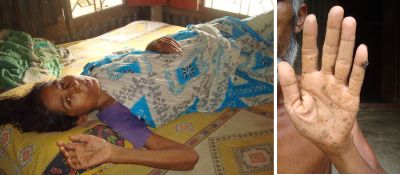
Arsenicosis affected Asia Begum is counting her days at her Hogoldanga village home in Sabdalpur union under Sreepur upazila of Magura district as doctors at Bangabandhu Sheikh Mujibur Rahman Medical University detected malignancy in her liver seven months ago. The 50-year-old woman, now bed-ridden, can hardly eat as she has very little digestion power, family sources said. Asia's husband Baharul Munshi, a poor farmer, died in 2003 after both of his legs were amputated as those developed gangrene from long-term intake of arsenic contaminated water.
Seven other people of the same village also died of arsenicosis and arsenic related diseases between 2003 and 2012 by drinking arsenic contaminated water for several years, sources in Sreepur upazila health complex said. In last four years, Laily Khatun, 46, wife of Golam Sarwar, their son Belal Hossain, 25, and daughter Joly Khatun, 13, died of similar situation.
Rizia Khatun, 30, Abul Kalam, 50, and Abdus Salam, 42, of the village also faced the same fate in 2003, 2005 and 2009 as they drank arsenic contaminated water for years, family and upazila health complex sources said. In the latest incident on July 11 this year, Golam Tahur, 52, of the village died after his right leg was amputated about eight months ago as gangrene was detected by the doctors, sources in UHC informed.
Visiting the village about 20 kilometres from Magura district town, this correspondent found Golam Sarwar, 50, his daughter Asma Khatun, 15, Abu Zafar, 34, Sharafat Ali, 40, Rabeya Begum, 40, Firoz Mia, 22, Nawab Ali, 18, Hitu Munshi, 20, Salma Khatun, 20, Shahidul Islam, 53, Nazmul, 30, and Sohel Mia, 20, are bearing symptoms of arsenicosis.
"One after another, villagers are dying of arsenicosis but the authorities did not bother to arrange fresh water to save us," said Golam Sarwar who lost his wife, a son and a daughter due to arsenic related diseases.
"After Baharul died of gangrene due to arsenic poisoning in 2003, we are crying for arsenic free tube-wells but to no effect. Still people in the area are forced to drink arsenic contaminated water that caused death of seven other people," said Shamsunnahar, wife of deceased Abdus Salam (Daily Star, August 13, 2012).11 million people under arsenic threat, October 19, 2012
Eleven million people, around 12.6 percent of Bangladesh's population, are under threat of arsenic contamination as they live in 466 unions prone to arsenic. In 2011, some 57,000 people were identified to have been suffering from arsenic-related diseases. Since 2009, an estimated 40 million people have not been taking safe water while 19 million people were found to be in immediate need of safe water supply. The statistics were revealed at a seminar, "Arsenic Mitigation under Model Building for Safe Water Supply Service by Local Government Institution Project", at the Department of Public Health Engineering (DPHE) auditorium in the capital yesterday.
The seminar was jointly organised by Japan International Cooperation Agency (Jica), Local Government Division (LGD), DPHE and Asia Arsenic Network (AAN), says a Jica press release. Speakers at the seminar said 50 percent of the country's shallow tube wells have not been examined since 2005.Victim of arsenicosis Asia Begum counts her days
Victim of arsenicosis Asia Begum counts her days at her village home in Magura as doctors recently detected malignancy in her liver, right, hand of an arsenic victim at Hogoldanga village in the district.
Dr Shyamol Kumar Das, Sreepur upazila health and family planning officer, said, "The case of arsenic poisoning in Hogoldanga village is a unique case as all the victims of arsenicosis including the eight killed people are members of an extended family. We are now giving iron and antioxidant tablets to the arsenicosis patients as there is no remedy of the disease."(Daily Star, April 25, 2013)Frightening facts and figure
THE findings of a research by the Centre for Clinical Epidemiology and Biostatistics, based in the University of Newcastle, Australia, which were released during a seminar on ‘Cancer Morbidity and Mortality among Chronically Arsenic Exposed Population in Rural Bangladesh’ in the capital on Tuesday, are scary.
According to a New Age report on Thursday, the research reveals that while the overall mortality rate for cancer among people not exposed to arsenic is 106 per one lakh, it is 165 per one lakh among chronically-exposed population. The findings come at a time when millions of people around the country have already been exposed to arsenic-related diseases. As mentioned in different studies, national and international, conducted since 1993, the year the first case of arsenic-affected disease came to light at Chapainababganj, around eight crore people in more than two-thirds of the districts of the country have been drinking tube-well water that has higher levels of arsenic than is deemed safe.
Most importantly, almost all the people at arsenic risk belong to rural areas in general and poor and low-income groups in particular, and can hardly afford alternative sources of safe drinking water.
At the same time, most of them lack adequate awareness of the menace. On the other hand, the relevant government authorities, including the Public Health Engineering Department, in most of the arsenic-affected districts, have so far reportedly done very little other than marking arsenic-contaminated tube-wells with danger sign and advising people not to drink water from these tube-wells.
Overall, it is safe to presume that many people who are already exposed to arsenic have continued to depend on arsenic-contaminated tube-wells for drinking water. Meanwhile, different non-governmental organisations that were initially seen eager to implement projects intended to help arsenic-affected people appear to have abandoned these projects for unknown reasons.
It is, of course, almost an established fact that enthusiasm of most NGOs working in the country on any issue is linked to that of their donors abroad. (New Age, February 15, 2013).Arsenic-related diseases spreading across country
Lack of safe drinking water blamedA lot of diseases are spreading among people in different parts of the country because of drinking arsenic-contaminated water, according to health experts. A large number of people are suffering from various diseases such as skin pigmentation (Melanosis) and lesions (Keratosis and Hyper Kertosis for drinking arsenic-contaminated water.
These ailments often lead to liver and kidney diseases, cardio-vascular diseases, diabetes, gangrene, multiple cancers and peripheral diseases, health experts said.
Public health experts of the country, while talking to daily sun, expressed grave concern over the spread of arsenic-related diseases in different parts of the country. Dr. Muhammad Abdus Sabur, a noted public health expert, quoting a survey of Directorate of Health Services said people in 62 districts out of 64 are suffering from arsenic-related diseases. “Many people in these areas, who have been drinking arsenic-contaminated water knowingly or unknowingly for a long time, have been attacked with various diseases,” he noted. Dr. Sabur said a WHO study on arsenic contamination shows that permissible limit of arsenic in drinking water is 0.05mg/1 but now this prevalence rate in Bangladesh is about 60mg/1.
People, including children, are knowingly or unknowingly taking this poison in their body through drinking of arsenic-contaminated water and eating food cooked by such water, he observed.
Dr AKM Jafar Ullah, project director of arsenic mitigation programme of Directorate of Health Services under health ministry said arsenic contamination of ground water has been widely reported in Bangladesh since 1993.
In 1994, the then government constituted three national committees to control and mitigate the arsenic pollution in the country. A total of 2,875 people have so far died of arsenic-related diseases and 120,000 have been suffering from various arsenic-related diseases across the country”, Dr. Jafar added(The Sun, 3 April, 2013)Arsenic contamination alarming in Kushtia
The number of arsenic-affected patients is increasing alarmingly in Kushtia district for lack of awareness and lax monitoring by the authorities concerned. The patients here have been suffering from skin diseases which cause emergence of black spots on their bodies. Sources in Kumarkhali Upazila Health Complex said that the number of arsenic-affected patients in the upazila stands at 412 which was 242 last year.
The number of arsenic-affected patients is increasing alarmingly in Kushtia district for lack of awareness and lax monitoring by the authorities concerned. The patients here have been suffering from skin diseases which cause emergence of black spots on their bodies. Sources in Kumarkhali Upazila Health Complex said that the number of arsenic-affected patients in the upazila stands at 412 which was 242 last year.
However, some organisations claimed that they have been trying to keep the situation under control.
As a result, the situation has turned worse.
In 2001, for the last time, the arsenic affected tube-wells in the district were detected marking red signs and the users were asked not to use the waters of the marked tube-wells. Dr Akuluddin of Kumarkhali Health Complex said most of the arsenic free tube-wells installed by the government have already gone out of order for overlooking proper maintenance and monitoring.
Scarcity of pure drinking water has gripped the people in the district as much of the groundwater has been contaminated. According to Department of Public Health of Kumarkhali, the level of arsenic contamination is very high because they are living beside the river Padma. Experts said that the level of contamination has risen alarmingly.
At present, like Kumarkhali, the inhabitants of Shelaidah, Jagannathpur and Chandpur face severe problems for want of pure drinking water as the contamination has been growing quickly day by day. The arsenic-affected patients have been passing their days miserably as any government, NGOs and social organisations have not come forward to mitigate their sufferings (Daily Sun, 2 March 2013 ).Anthropogenic Source of Arsenic in other Areas eg Sri Lanka
Sri Lanka
housands of people in the Asian island nation of Sri Lanka have been struck by a mysterious and deadly form of kidney disease. A new study points to a likely cause - pesticides and fertilisers.
The new study blames farm chemicals, which are cheap in Sri Lanka, thanks to government subsidies, and often overused. Cadmium is found in some fertilisers. Arsenic is an active ingredient in some pesticides.
Companies that import and sell pesticides and herbicides contest the government's conclusion. They point out that the government and WHO have not yet released their full study.
"We believe the evidence is not scientific enough to say that the pesticide is the main reason for this chronic kidney disease," says Senarath Kiriwaththuduwage, research and development manager at Crop Life Sri Lanka, an industry trade association. "These findings are not published in reputed scientific journals."(BBC, 18 September 2012 Last updated at 05:40 GMT )43,000 die annually in Bangladesh: Study
About 43,000 to 56,000 people die annually in Bangladesh from diseases caused by arsenic, a poisonous chemical that contaminates groundwater mostly in the southern parts of the country, says a study. Also, some 0.5 percent of the GDP is lost due to this, according to the study on arsenic contamination in Bangladesh jointly conducted by the Department of Geology, Dhaka University, and Columbia University, USA.
Tests of 50,000 tubewells in Araihazar upazila of Narayanganj revealed that water of 48 percent of the tubewells are contaminated with arsenic. This rate is 25 percent all over Bangladesh, said Dr Kazi Matin Ahmed, geology professor of Dhaka University. He presented the paper at a seminar titled “Arsenic Activities, Research and Outcomes” organised by the Bangladesh Medical Research Council (BMRC) in its auditorium in the capital yesterday.
Matin said the World Health Organization's acceptable level of arsenic in water was 10 ppb (parts per billion), but in Bangladesh the contamination level was 50 ppb. He said estimated 35 million people in Bangladesh were exposed to more than 10 ppb arsenic, 22 million to 50 ppb arsenic and 5.6 billion were exposed to over 200 ppb arsenic, which caused 18 types of diseases, including lung, skin and bladder cancer, ischemic heart diseases and skin lesions.
“Pregnant women pass arsenic to the fetus during pregnancy, and babies are born with the same blood arsenic levels as their mothers,” said Prof Joseph Graziano of Environmental Health Sciences and Pharmacology of Columbia University, adding that parental arsenic exposure increased the risks for certain cancers and cardiovascular diseases in later life. State Minister for Health and Family Welfare Zahid Maleque expressed his concern over rampant extraction of groundwater (Daily Star, June 18, 2014).Bangladeshis having heart attacks sooner than Westerners: Study
Bangladeshis are having heart attacks at least 10 years sooner than typical sufferers of the condition in the West, according to preliminary findings of the largest heart attack study ever carried out in Bangladesh, reports UNB. The study reveals that toxic heavy metals such as arsenic, copper and lead may be increasing the risk of heart attack in the country. The study titled, 'Bangladesh Risk of Acute Vascular Events' was conducted with a partnership among researchers at the Cambridge University in England, the Dhaka-based health research institution icddr,b and the Bangladesh National Institute of Cardiovascular Diseases . The preliminary study findings were discussed at a seminar held at icddr,b auditorium on Tuesday. Beginning as a pilot initiative in 2011, this ongoing study has so far recruited about 4,000 acute myocardial infarction (or first heart attack) cases and 4,000 healthy participants as 'controls'- making BRAVE the largest heart attack study in Bangladesh history. (The Independent,WEDNESDAY, 30 APRIL 2014 )
Arsenic poses health hazard in Rajshahi
Arsenic poses a serious threat to the health of the drought-affected people as tube-well waters in the region, particularly in seven upazilas of Rajshahi and Chapainawabganj districts have become vulnerable to the arsenic contamination, reports BSS. The people of Godagari and Tanore upazilas of Rajshahi and Bholahat upazila of Chapainwabganj, bordering the Indian state of West Bengal, are the worst sufferers as they use arsenic contaminated ground water for drinking.
However, arsenicosis could be prevented coupled with reducing its fatal consequences if the patients are ensured with safe drinking water and proper healthcare management at preliminary stage.
"Although the government and the NGOs with the help of UNICEF have been trying to mitigate the problem and find out alternate sources of safe drinking water the measures still remain at the micro-level," said Dr Shahana Alam, Upazila Health and Family Planning Officer of Tanore. She was addressing a daylong upazila level orientation on arsenicosis issue and its contamination and mitigation held at Tanore Upazila Health Complex Thursday as resource person. Upazila Health Complex and NGO Forum for Public Health jointly organised the discussion.Dr Shahana Alam stressed the need for massive research by the government, adding that UNICEF, World Bank, and other donor agencies should come forward in assisting the government as it requires a big fund to face the challenge.
She sought cooperation of the media people to project the hazards of arsenic and bring changes to behavior and habits of the people in their search for alternative safe drinking water. Rabiul Haque said, "We have detected 20,541 tube-wells out of 92,000 infected by arsenic contamination in Chapainawabgonj.
We have tested the tube-wells and found arsenic contamination in 80 percent of the tube-wells in five upazilas." The fight against arsenic is very tough. Coordinated efforts of different government and non-government organisations are essential to stem the arsenic contamination," he said (The Independent, 27 September 2014) .Drought-affected people vulnerable to Arsenicosis
RAJSHAHI, Sept 26: Arsenic poses a serious threat to the health of the drought-affected people as tube-well waters in the region, particularly in seven upazilas of Rajshahi and Chapainawabgonj districts have become vulnerable to the arsenic contamination. The people of Godagari and Tanore Upazilas of Rajshahi and Volahat upazila of Chapainwabganj, bordering the Indian state of West Bengal, are the worst sufferers as they use arsenic contaminated ground water for drinking.However, the arsenicosis could be prevented coupled with reducing its fatal consequences if the patients are ensured with safe drinking water and proper healthcare management on preliminary stage."Although the government and the NGOs with the help of UNICEF have been trying to mitigate the problem and find out the alternative sources of safe drinking water the measures still remain at the micro-level," said Dr Shahana Alam, Upazila Health and Family Planning Officer of Tanore
(The Daily Observer/2014/09/27/).
80m people facing risks of arsenic contamination
(Daily Sun, 30 November 2014) Around 80 million people are under the threat of arsenic contamination as arsenic-borne diseases are spreading alarmingly, a study said recently.The report says that arsenic-borne disease is a silent killer which is spreading fast with the passage of time. Sixty-two districts are being affected with this arsenic.
The public health-experts in the country are highly worried over arsenic as it causes many diseases into human body by taking the contaminated water.Dr Abdullah Hel Baki, a noted public health expert, said that arsenic which affects human body slowly causes various health hazards, including skin problems such as colour changes, hard patches on the palms and the feet.Besides, it causes skin cancer, cancers of bladder, kidney and lung, and diseases of blood vessels of legs and feet, diabetes, high blood-pressure and reproductive disorders etc.
Take arsenic menace seriously (Editorial, The Independent, Saturday, 07 February 2015)
It is worrying to note that in Bangladesh as many as 7.5 million people are suffering from arsenic related health problems. Moreover, 48 per cent arsenicosis patients of the country are not getting any treatment for their disease while 23 per cent of these wretched people are still drinking water contaminated with arsenic. This means the presence of arsenic in ground water across the country still remains a major health threat to the concerned people. This is despite the fact that arsenic in water was discovered decades ago and that many people died of this poisonous content in water. Experts have another grim reality to disclose, according to a report of this newspaper yesterday. One in 10 adult deaths in the southern region of the country where the arsenic contamination in water is relatively high is due to some forms of cancer caused by arsenic poisoning. In the districts of Pabna, Sirajganj, Jessore, Munshiganj, etc. arsenic menace is also very high. In fact, 54 out of 64 districts of the country are arsenic affected in varying degrees.
When arsenic is thus posing a great threat to public health, the government’s relevant departments seem to be not much worried about the matter. Some time ago, the Department of Public Health (DPH) itself acknowledged that initiatives to control the menace are largely inadequate. Then should people of the areas where arsenic is posing a great threat be left to their fate? When there are means to control this menace, this cannot be so.
Safe drinking water and proper treatment must be made available to the people of these places without any delay. The Public Health Department must arrange for more production tube wells where the arsenicosis patients are not being able to get pure drinking water.
Arsenic contamination is haunting people of this country for a long time. According to experts, it takes up to 20 years for arsenic poisoning to cause cancer. As people are dying every year from this menace, there is no point at trivializing the issue. Tax payers’ money was wasted in the past because of wrong strategy taken by the government. It is now expected that the relevant departments, including the health ministry, would take up the issue seriously and the problem is effectively controlled. Only through a comprehensive approach including a fresh study on the disease condition updating the arsenicosis patient data and making available modern treatment facilities to patients through proper planning, this can be done.Meanwhile, the Bangladeshi government has largely downplayed the problem. The government has still not adjusted its arsenic safety level to meet the decades-old WHO standard. This means that officially, “only” about 20 million people are considered exposed to arsenic; WHO estimates the number is closer to 40 million. Further, the Ministry of Health official in charge of monitoring arsenic says the number of people actually affected is far less: that just the 65,000 people displaying visible skin lesions have actually been poisoned.
“Arsenic is not now [a] problem [in] Bangladesh,” says Dr. Faruk Ahmed Bhuiyan, a senior official at the Directorate General of Health Services in charge of overseeing the arsenic issue. His colleagues add that his program did not see any connection between cancer or cardiovascular issues and arsenic poisoning. His office estimates that only 100 or 200 people die each year as a result of arsenic poisoning. He and his colleagues say they were unaware of either the WHO Bulletin study or the Columbia/Chicago HEALS study, or any of the epidemiology linking arsenic with chronic diseases (08.16.2017 / BY Sam Loewenberg ).Our School Project for the Poor at Ambikapur, Faridpur, Bangladesh
Last Modified: March 5,2021)